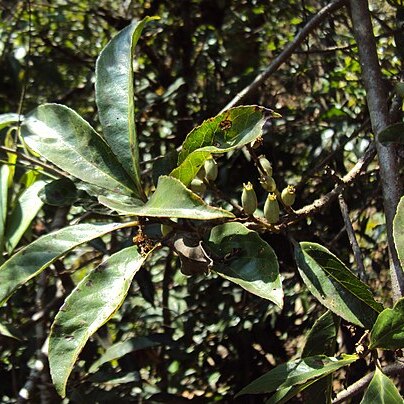| Therapeutic use
|
Abortifacient agents (bark), Abortion, spontaneous (bark), Antifibrinolytic agents (bark), Aphrodisiacs (bark), Arthritis (bark), Asthma (bark), Astringents (bark), Bronchitis (bark), Diarrhea (bark), Dysentery (bark), Dyspepsia (bark), Earache (bark), Elephantiasis (bark), Endophthalmitis (bark), Gonorrhea (bark), Hemoptysis (bark), Hemorrhage (bark), Infection (bark), Inflammation (bark), Inflammatory bowel diseases (bark), Leprosy (bark), Leukorrhea (bark), Liver diseases (bark), Menorrhagia (bark), Menstruation-inducing agents (bark), Periodontal diseases (bark), General tonic for rejuvenation (bark), Skin diseases (bark), Tuberculosis, lymph node (bark), Vaginal discharge (bark), Cooling effect on body (bark), Abortifacient agents (leaf), Abortion, spontaneous (leaf), Aphrodisiacs (leaf), Astringents (leaf), Dysentery (leaf), Endophthalmitis (leaf), Hemorrhage (leaf), Infection (leaf), Inflammation (leaf), Inflammatory bowel diseases (leaf), Leprosy (leaf), Menorrhagia (leaf), Menstruation-inducing agents (leaf), Periodontal diseases (leaf), Vaginal discharge (leaf), Cooling effect on body (leaf), Abdomen (unspecified), Cosmetic (unspecified), Cough (unspecified), Diarrhea (unspecified), Dropsy (unspecified), Dysentery (unspecified), Enteritis (unspecified), Eye (unspecified), Menorrhagia (unspecified), Sore (unspecified), Uteritis (unspecified), Astringent (unspecified), Conjunctivitis (unspecified), Bronchitis (unspecified), Hepatitis (unspecified), Ophthalmia (unspecified), Tumor (unspecified), Bactericide (unspecified), Anti-inflammatory agents (unspecified), Edema (unspecified), Elephantiasis (unspecified), Endophthalmitis (unspecified), Filariasis (unspecified), Furunculosis (unspecified), Liver diseases (unspecified), Periodontal diseases (unspecified), Suppuration (unspecified), Ulcer (unspecified), Uterine diseases (unspecified), Uvular hypertrophy (unspecified)
|

